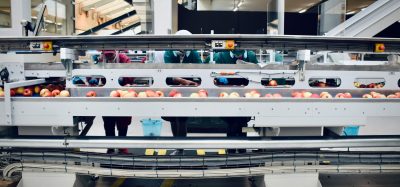Conveyors unite
- Like
- Digg
- Del
- Tumblr
- VKontakte
- Buffer
- Love This
- Odnoklassniki
- Meneame
- Blogger
- Amazon
- Yahoo Mail
- Gmail
- AOL
- Newsvine
- HackerNews
- Evernote
- MySpace
- Mail.ru
- Viadeo
- Line
- Comments
- Yummly
- SMS
- Viber
- Telegram
- Subscribe
- Skype
- Facebook Messenger
- Kakao
- LiveJournal
- Yammer
- Edgar
- Fintel
- Mix
- Instapaper
- Copy Link
Posted: 6 November 2006 | Olaf Heide, EHEDG Conveyors subgroup member | No comments yet
On June 21 2006 the new European Hygienic Engineering & Design Group (EHEDG) subgroup ‘Conveyors’ was chartered in Amsterdam. The initial meeting was led by Jacques Kastelein, EHEDG Executive Committee member and chairman of the Equipment and Components group. Team members are delegates from different companies which are each involved with some aspect of designing machines, systems, components or cleaning issues for food processing equipment and conveyors.
On June 21 2006 the new European Hygienic Engineering & Design Group (EHEDG) subgroup ‘Conveyors’ was chartered in Amsterdam. The initial meeting was led by Jacques Kastelein, EHEDG Executive Committee member and chairman of the Equipment and Components group. Team members are delegates from different companies which are each involved with some aspect of designing machines, systems, components or cleaning issues for food processing equipment and conveyors.
On June 21 2006 the new European Hygienic Engineering & Design Group (EHEDG) subgroup ‘Conveyors’ was chartered in Amsterdam. The initial meeting was led by Jacques Kastelein, EHEDG Executive Committee member and chairman of the Equipment and Components group. Team members are delegates from different companies which are each involved with some aspect of designing machines, systems, components or cleaning issues for food processing equipment and conveyors.
All participants showed their concern about the impact of hygienic design on food conveyors. To ensure proper hygiene conditions, it is vital that all parts of a system fulfil the necessary requirements. Indeed the effectiveness of a system as a whole is really only as good as its weakest component
While there are already quite a few guidelines and regulations covering food processing machines, there is nothing specific yet on conveyors. The subgroup members discussed the importance of this issue to support engineers, technicians and all other people interested in this subject, to provide a comprehensive overview of the salient issues that need to be considered and which solutions are available in respect to the hygienic design of conveyors. This resulted in the decision to establish a respective EHEDG guideline.
Scope of the guideline
The team decided to focus on meat, poultry and seafood, because hygiene and cleaning are key issues in these industry segments.
The general purpose is to simplify existing information and to give smaller companies a comprehensive overview of options, opportunities, requirements and materials to be considered in terms of hygienic conveyor design. The document will also give advice on cleaning procedures and cleaning systems. The group is considering drawing up a checklist to implement, achieve and/or assess the hygienic design of conveyors.
Possible guideline contents proposed are:
Hygienic design of conveyor equipment
- Engineering basics (construction, frame, supports/slider beds, pulleys, surfaces, electronics etc.)
- Materials (recommended, not recommended)
Hygienic design of conveyor belts
- Distinguish different types of construction (e.g. reinforced fabric, monolithic flat, plastic modular, etc)
- Design recommendations for belts (e.g. non-porous, smooth surfaces, completely sealed, round edges, cleanability of surface pattern/embossing, no dead space, all surfaces and parts accessible for cleaning, i.e. hinges, pivot rod)
- Design of accessories (flights, guides, side guards)
- Materials (chemical and physical issues)
Special measures to improve hygiene and cleanability
- Examples are nano-surfaces, special coatings, active substances and others
Maintenance and cleanability
- Evaluation of different cleaning methods
- Evaluation of possible cleaning equipment
Normative references will include the Machinery Directive (98/37/EC) and EN 1672-2 Hygiene Requirements for Food Processing Machinery. EHEDG guidelines, NSF/3-A standards and other existing regulations and relevant information will also be taken into consideration. Publication of the guideline is expected next summer (2007).
In order to produce the most valuable document, the commitment and contribution of many companies is important. Conveyors are often an integral part of complex processing machines or systems. Consequently input from different industry experts is necessary.
To cover all aspects, the EHEDG subgroup would like to invite additional food processors and machinery producers to join the team. The chairmanship of the subgroup conveyors is still vacant and should preferably be filled by an equipment manufacturer. Interested companies, please contact EHEDG (www.ehedg.org).









